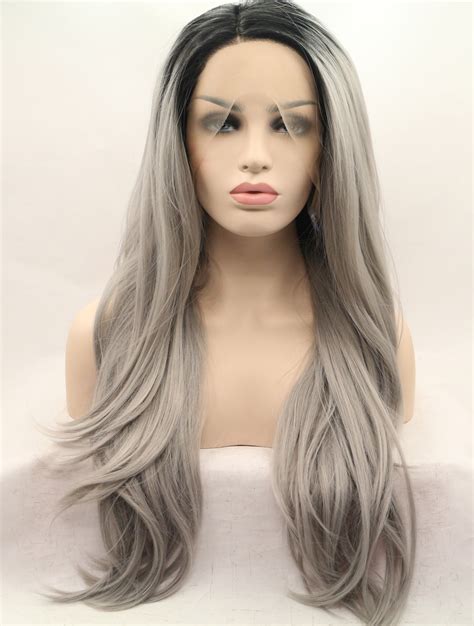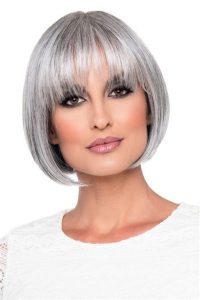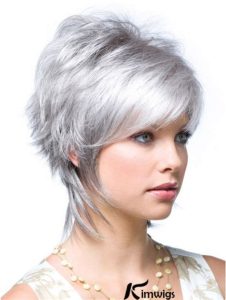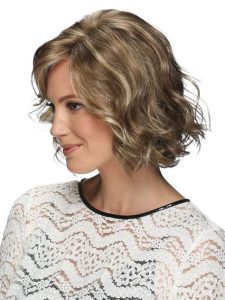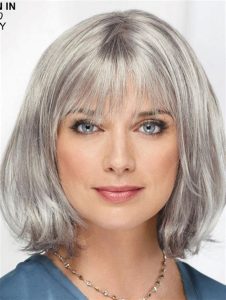Long Hair Wigs For Women: Layered Lace Wigs vs. Straight Synthetic Wigs (2025 Guide)
Introduction
In the world of hair extensions, long hair wigs have emerged as a game-changer, offering women a versatile and convenient way to enhance their style. With advancements in technology, two popular types of long hair wigs have gained prominence: layered lace wigs and straight synthetic wigs. This guide delves into these two options, exploring their distinct features, benefits, and drawbacks to help you make an informed decision based on your individual needs and preferences.

Layered Lace Wigs
Lace wigs are known for their natural-looking appearance and customizability. They feature a sheer lace base that mimics the human scalp, allowing for seamless integration with your own hair. Layered lace wigs incorporate multiple layers of hair to create volume and dimension.
Benefits of Layered Lace Wigs:
- Natural-looking: The lace base provides an illusion of your natural scalp, creating a seamless transition.
- Versatile: Layered wigs offer styling options, from sleek straight styles to cascading curls.
- Comfortable: Lace wigs are lightweight and breathable, ensuring comfort even for extended wear.
Drawbacks of Layered Lace Wigs:
- Price: Lace wigs tend to be more expensive than synthetic wigs.
- Maintenance: Lace wigs require regular upkeep, including washing, drying, and styling.
- Durability: Lace is more delicate than synthetic fibers, making it susceptible to tearing or snagging.
Straight Synthetic Wigs
Synthetic wigs are made from artificial fibers that imitate the look and feel of human hair. Straight synthetic wigs offer a polished and sleek look.
Benefits of Straight Synthetic Wigs:
- Affordable: Synthetic wigs are generally more affordable than lace wigs.
- Low-maintenance: Synthetic wigs require minimal upkeep, making them convenient for busy individuals.
- Durable: Synthetic fibers are resilient and can withstand heat styling tools.
Drawbacks of Straight Synthetic Wigs:
- Less natural-looking: While advancements have been made, synthetic wigs may not always achieve the same level of realism as lace wigs.
- Limited styling options: Straight synthetic wigs are primarily designed for sleek styles and may not allow for as much versatility as layered lace wigs.
- Heat sensitivity: Synthetic fibers can be damaged by excessive heat, limiting styling options.
Layered Lace Wigs VS. Straight Synthetic Wigs
Table 1: Key Features Comparison
| Feature | Layered Lace Wigs | Straight Synthetic Wigs |
|---|---|---|
| Base | Lace | Synthetic fibers |
| Appearance | Natural-looking | May be less natural-looking |
| Volume | Layered for volume | Typically less volume |
| Styling versatility | High | Lower |
| Comfort | Lightweight and breathable | Comfortable |
| Price | More expensive | More affordable |
| Maintenance | Regular upkeep required | Low-maintenance |
| Durability | Lace is delicate | Synthetic fibers are durable |
Which Type of Long Hair Wig Is Right for You?
The choice between a layered lace wig and a straight synthetic wig depends on your individual priorities and budget. Consider these factors:
If you prioritize:
- Natural appearance: Layered lace wigs
- Styling versatility: Layered lace wigs
- Long-term investment: Layered lace wigs
If you prioritize:
- Affordability: Straight synthetic wigs
- Low maintenance: Straight synthetic wigs
- Short-term solution: Straight synthetic wigs
Step-by-Step Guide to Choosing a Long Hair Wig
1. Determine your budget: Establish a price range that aligns with your financial constraints.
2. Research different types of wigs: Explore the various options available, including textures, colors, and lengths.
3. Read reviews and compare prices: Gather information from trusted sources to make informed decisions.
4. Measure your head: Ensure the wig you choose fits comfortably by measuring your head circumference.
5. Consider your hair type and lifestyle: Match the wig’s texture and style to your own hair and daily routine.
Tips for Caring for Your Long Hair Wig
1. Regular washing: Wash your wig every 7-10 wears to maintain its hygiene and prevent tangles.
2. Proper drying: Air-dry your wig or use a low heat setting on a blow dryer to avoid damaging the fibers.
3. Avoid excessive brushing: Brush your wig gently using a wide-tooth comb or wig brush.
4. Heat styling with caution: Use heat styling tools sparingly and always apply a heat protectant before use.
5. Store properly: Store your wig on a mannequin head or wig stand to prevent tangles and maintain its shape.
Frequently Asked Questions (FAQs)
1. Can you swim in a long hair wig?
It is not recommended to swim in a long hair wig. Chlorine and saltwater can damage the fibers and lace base.
2. How long do long hair wigs last?
The lifespan of a long hair wig depends on the type and care it receives. Lace wigs typically last longer with proper maintenance, while synthetic wigs may have a shorter lifespan due to heat sensitivity.
3. Can I dye a synthetic wig?
It is not recommended to dye a synthetic wig. The fibers are not porous, making it difficult for the dye to penetrate.
4. How often should I trim my wig?
Trimming your wig every 2-3 months can remove split ends and keep it looking its best.
5. Can I sleep in my wig?
Sleeping in a wig is not recommended as it can cause tangles and discomfort.
6. How do I avoid wig tangles?
Brush your wig gently, avoid over-washing, and use detangling products to prevent tangles.
7. Can I bleach a lace wig?
Bleaching a lace wig is possible but should only be done by a professional to avoid damage.
8. How do I know my wig is the right size?
Measure your head circumference and consult the wig’s size chart to ensure a comfortable fit.
Conclusion
Whether you choose a layered lace wig or a straight synthetic wig, the key is to find a wig that complements your style and needs. By understanding the features, benefits, and drawbacks of each type, you can make an informed decision that will enhance your confidence and allow you to embrace a beautiful, long-haired look.
